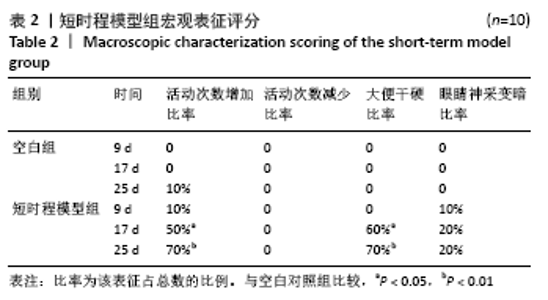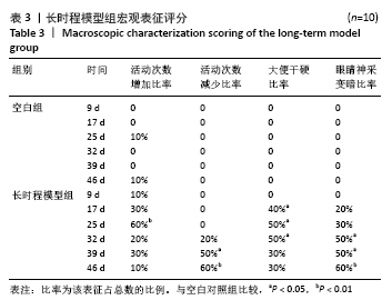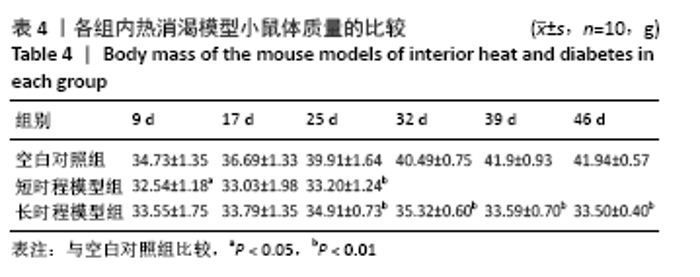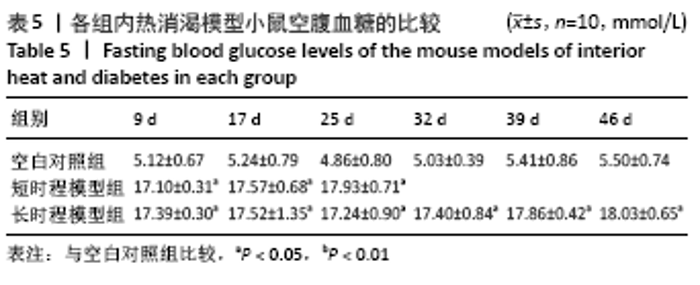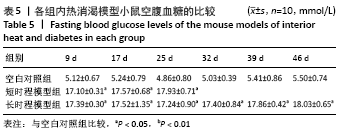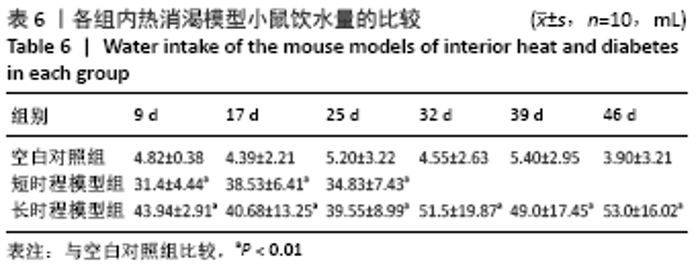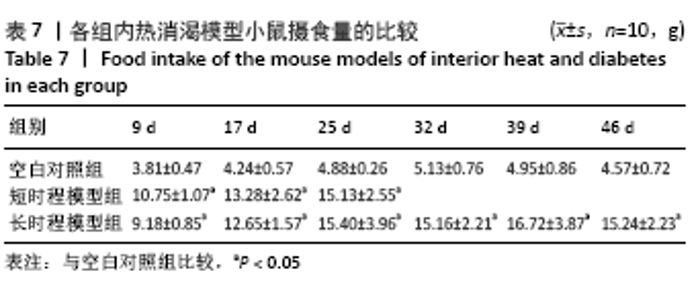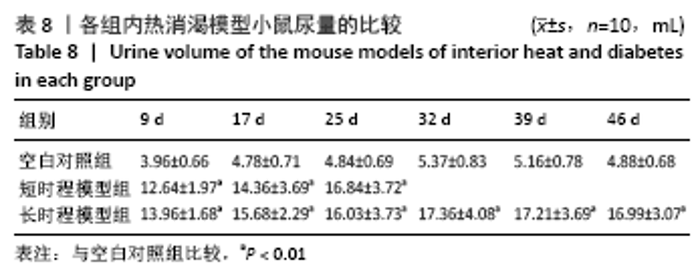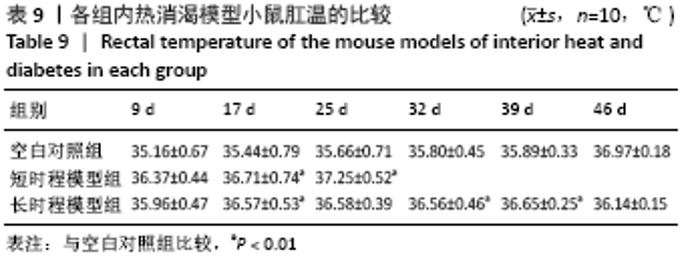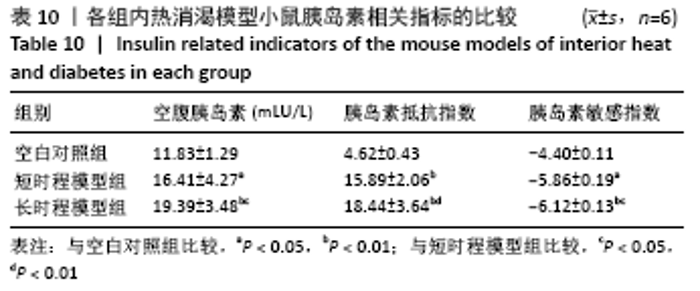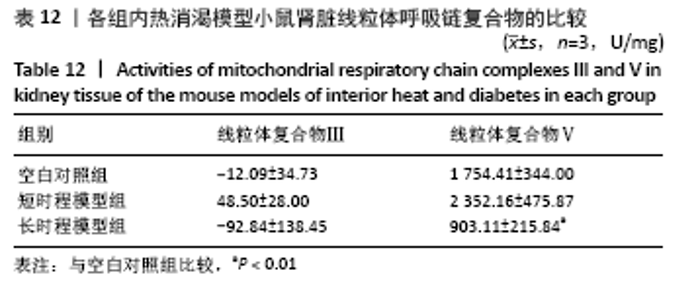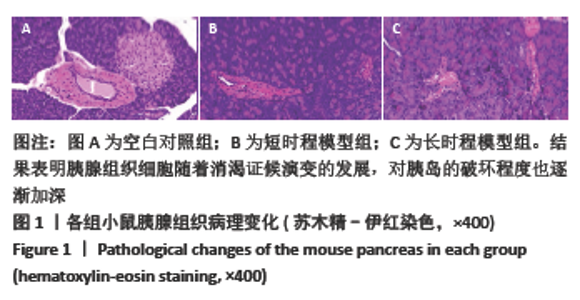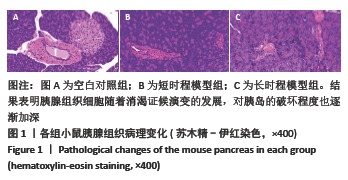[1] 肖振辉. 中医内科学[M]. 2版. 北京:人民卫生出版社,2010:301-302.
[2] 李硕.《黄帝内经》医学术语词义研究[D]. 沈阳:辽宁中医药大学, 2016,158.
[3] 裴国勇, 郭泽伟, 王姝祺, 等. 2型糖尿病中医辨证分型的临床特点研究[J]. 中医药临床杂志,2018,30(12):2249-2252.
[4] 张文康. 中西医结合医学[M]. 北京:人民卫生出版社,2000:805-806.
[5] 张文佳, 付晓乐, 辛效毅. 2型糖尿病中医证型与临床生化指标的关系[J]. 南京中医药大学学报,2017,33(5):484-487.
[6] 黄越燕. 病证结合动物模型的研究现状与思考[J]. 世界中西医结合杂志,2018,13(10):1459-1462.
[7] 马会霞, 严美花, 张浩军, 等. 糖尿病病证结合动物模型的现状思考[J]. 中华中医药杂志,2013,28(7):1933-1935.
[8] 李中南, 邢艳阳, 周媛媛, 等. 萆苓祛痛方对糖尿病痛风大鼠骨骼肌组织SIRT3蛋白表达及URAT1 mRNA的影响[J]. 中国实验方剂学杂志,2019,25(21):25-31.
[9] Zhou YS, Fan YL, Zhang YP, et al. Development of animal model of heat syndrome due to insufficiency of yin fluids. Chinese J Basic Med TCM. 2001;7(9):23-25.
[10] 吴晏, 韩静, 黄黎明, 等. 糖尿病模型大鼠表征及其证候动态演变研究[J].辽宁中医杂志,2011,38(11):2279-2283.
[11] 陈燕清, 杨晶晶, 曹卓青, 等. 病证结合动物模型的思考[J].中国中医基础医学杂志,2017,23(5):628-629+705.
[12] 成秀梅, 杜惠兰, 李寒. 凝血瘀证动物模型的创建[J].中国中医基础医学杂志,2005,11(8):604-605.
[13] 张丹, 李哲, 朱庆均, 等.“劳倦过度,房室不节”肾阳虚小鼠模型的建立及评价[J].实验动物科学,2008,25(4):9-11.
[14] 曹泽标, 刘超男, 王保华, 等. 基于“火热论”探讨“胰岛素抵抗-胰岛β细胞缺陷-高血糖-2型糖尿病”网[J].中华中医药杂志, 2019,34(8):3668-3671.
[15] 赵进喜, 冯兴中, 仝小林, 等. 论糖尿病的中医核心病机与基本治法[J].北京中医药,2019,38(1):3-6.
[16] Groti K, Zuran I, Antonic B, et al. The impact of testosterone replacement therapy on glycemic control, vascular function, and components of the metabolic syndrome in obese hypogonadal men with type 2 diabetes. Aging Male. 2018;21(3):158-169.
[17] Roncero-Ramos I, Rangel-Zuñiga OA, López-Moreno J, et al. Mediterranean Diet, Glucose Homeostasis and Inflammasome Genetic Variants: The CORDIOPREV Study. Mol Nutr Food Res. 2018; 62(9):e1700960.
[18] 陈思兰, 林兰, 楚晓燕, 等. Ⅱ型糖尿病中医辨证分型与胰岛素抵抗的相关性分析[J].中国中医药信息杂志,2001,8(6):49-51.
[19] 郭乃刚, 施毕旻, 成兴波. 2型糖尿病辨证分型与胰岛素抵抗及胰岛B细胞功能关系探讨[J]. 实用中医内科杂志,2004,18(5):405.
[20] 周洁, 王纯庠. 2型糖尿病病程及胰岛素抵抗、胰岛β细胞功能损害与中医病机、证型演变相关性研究进展[J].长春中医药大学学报, 2014,30(4):754-756.
[21] 倪菲, 于睿, 崔家鹏, 等. 香砂六君子汤对脾气虚证浅表性胃炎大鼠线粒体能量代谢影响研究[J].陕西中医,2020,41(2):152-155.
[22] 刘姝含, 郭蓉娟, 于姚, 等. 浅谈抑郁症脾虚病机与线粒体能量代谢障碍的相关性[J].北京中医药大学学报,2019,42(9):773-777.
[23] Antoun G, Mcmurray F, Thrush AB, et al. Erratum to: Impaired mitochondrial oxidative phosphorylation and supercomplex assembly in rectus abdominis muscle of diabetic obese individuals. Diabetologia. 2016;59(2):396-397.
[24] Yoshida M, Muneyuki E, Hisabori T, et al. ATP Synthase - a marvellous rotary engine of the cell. Nature Reviews Molecular Cell Biology. 2001;2(9):669-677.
[25] Boyer PD. What makes ATP synthase spin? Nature. 1999;402(6759): 247-249.
[26] Wang H, Oster G. Energy transduction in the F1 motor of ATP synthase. Nature. 1998;396(6708):279-282.
[27] 李亚杰. 不同训练方案对大鼠腓肠肌线粒体呼吸链复合体酶的影响及其机制的研究[D]. 兰州:西北师范大学,2016.
[28] 武志刚, 徐自强, 陈纪豪, 等. ATP合酶在糖尿病大鼠阴茎海绵体平滑肌细胞病变中的作用机制[J]. 浙江医学,2019,41(18):1943-1947+ 1912. |
